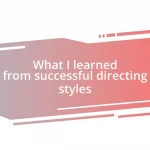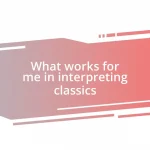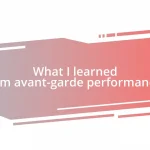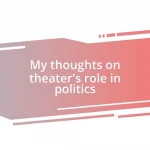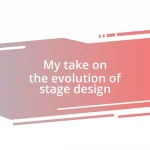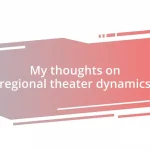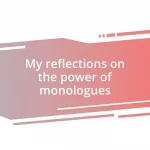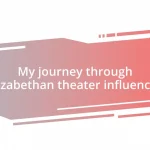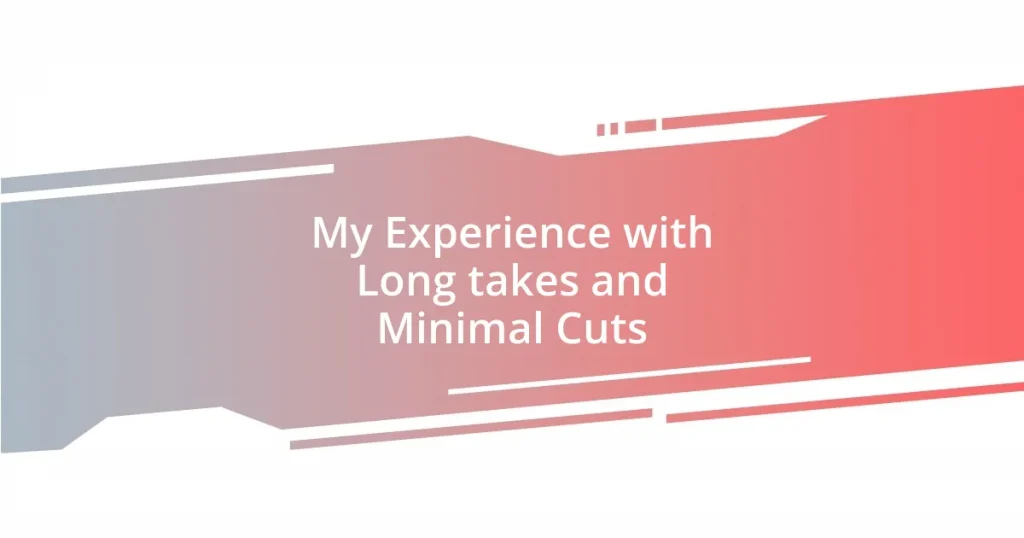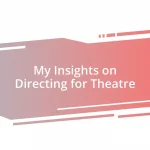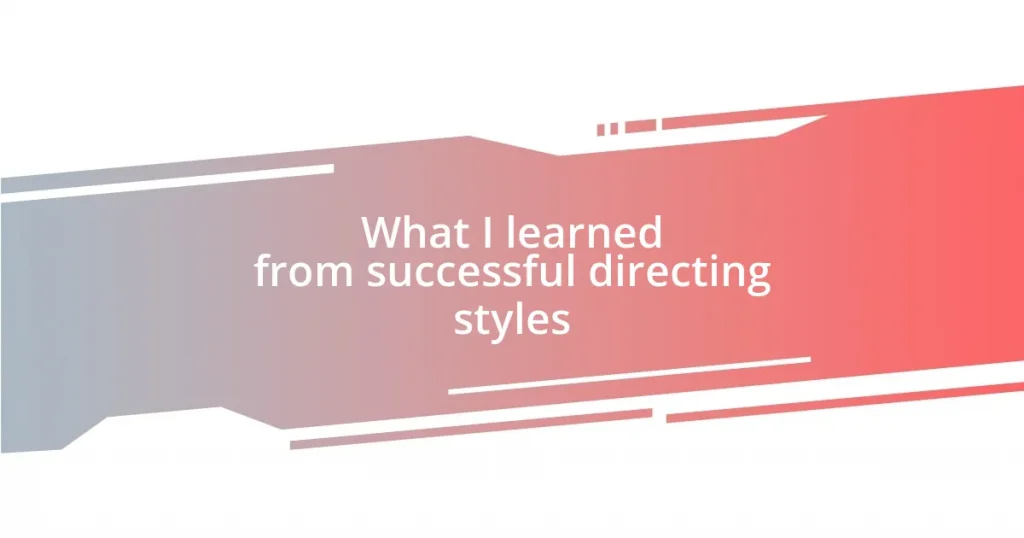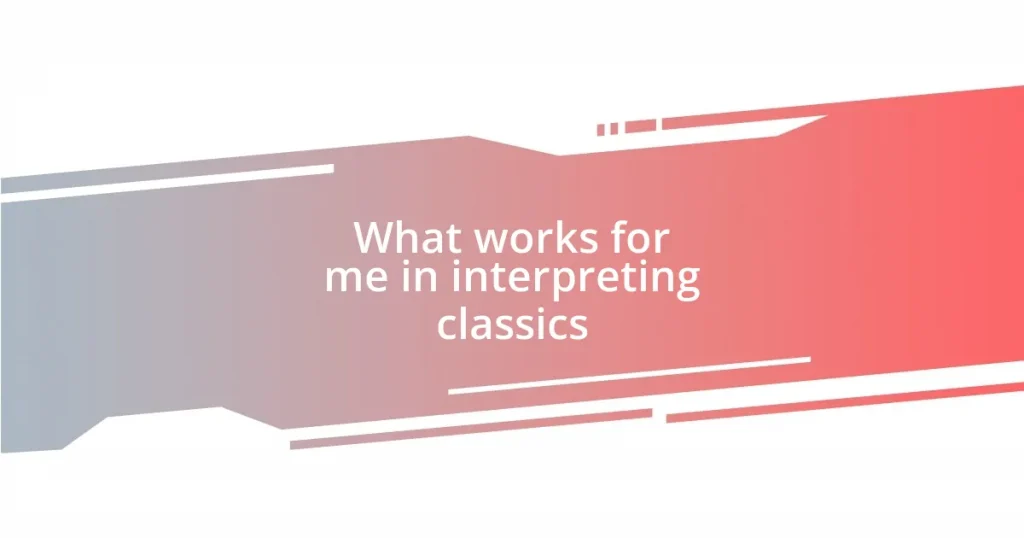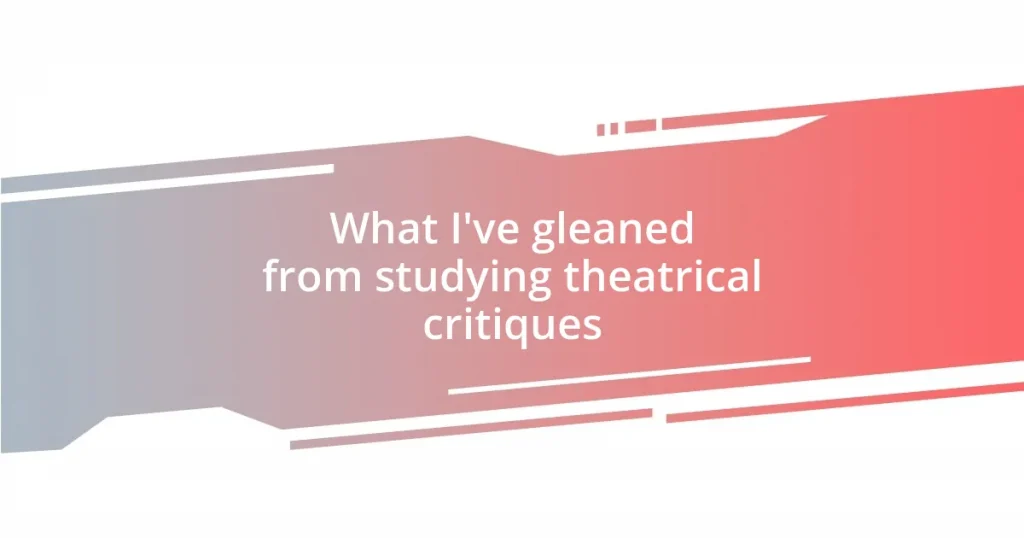Key takeaways:
- Long takes enhance emotional engagement, allowing viewers to connect deeply with characters and the story’s authenticity.
- Technical challenges include synchronization of actors and crew, effective equipment management, and ensuring consistent emotional performance.
- Meticulous planning, rehearsals, and dynamic lighting are crucial for successfully executing long takes.
- Masterful examples, like scenes from “Children of Men” and “Birdman,” demonstrate how continuous shots can create immersive experiences and convey character depth.
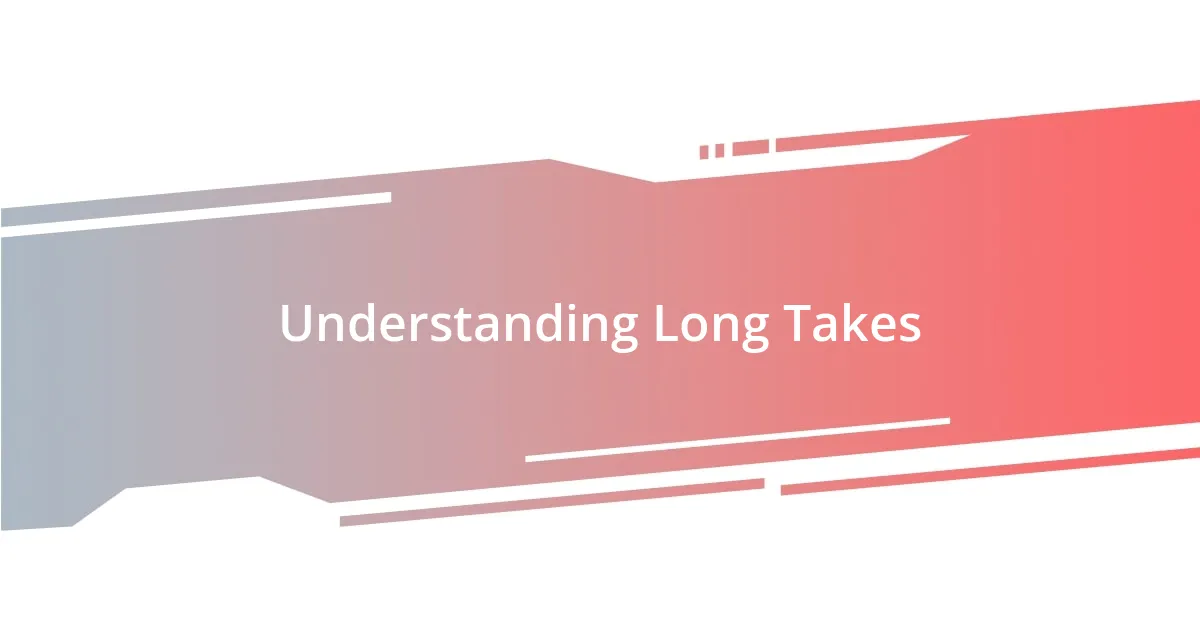
Understanding Long Takes
Long takes are captivating in their ability to immerse viewers into the narrative, creating a seamless experience that feels almost like a real-life observation. I remember watching a film where a long take followed a character through a bustling market. I felt like I was right there, surrounded by the colors and sounds, almost intimate with their journey. How many times have you been pulled into a story, only to realize you’ve forgotten the camera is there?
In my experience, long takes often demand a higher degree of planning and coordination, as every movement must be meticulously choreographed. I once worked on a short film that featured a long, continuous shot, and we practiced it for hours. The thrill of nailing it on the first take was electric, but the pressure to maintain authenticity and emotion in that extended moment was palpable. It’s fascinating how a single, unbroken shot can communicate so much depth and nuance in a character’s emotional arc.
What really draws me to long takes is the authenticity they bring to storytelling. Unlike quick cuts that can disorient the viewer, a long take allows us to breathe and truly connect with the characters. Have you ever noticed how time seems to slow down as you watch a long take unfold? In those moments, I find myself evaluating not just the film, but my connection to the story being told.
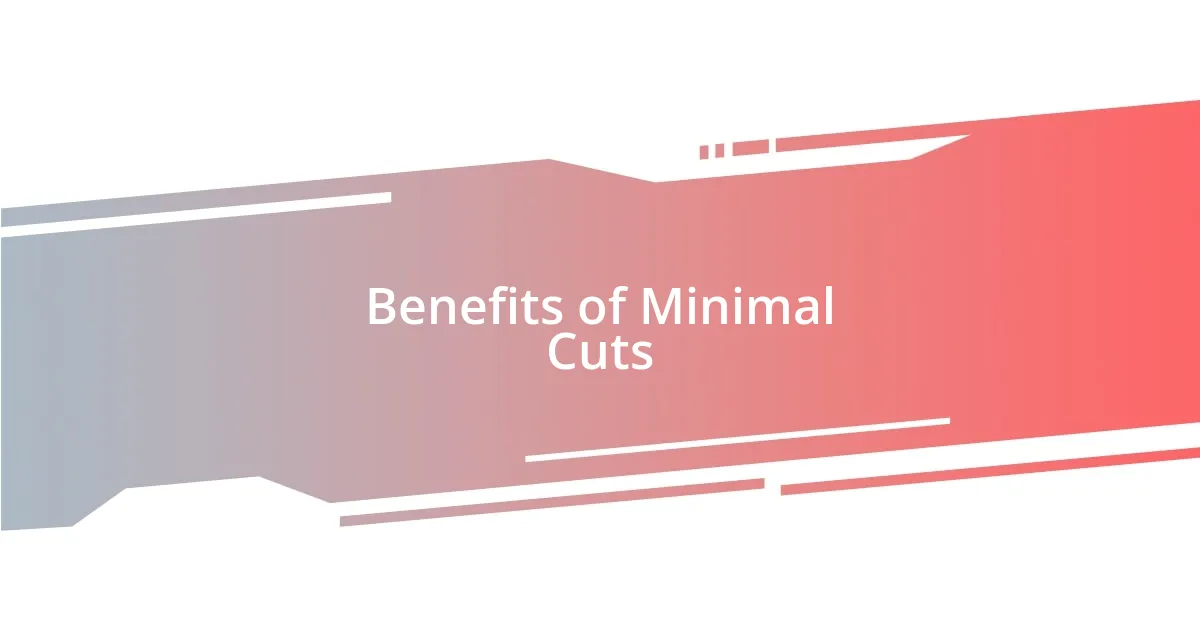
Benefits of Minimal Cuts
The benefits of minimal cuts really come down to enhancing the viewer’s emotional engagement. In my experience, when a film uses fewer cuts, it allows me to absorb the intricacies of a scene fully. I remember watching a gripping drama where the minimal cuts elevated the tension so effectively that I felt as if I were part of the unfolding drama. Each emotion felt more authentic and resonated deeply with me, creating an immersive experience that lingered long after the credits rolled.
- Increased Emotional Connection: Minimal cuts encourage viewers to focus on the actors’ performances, forging a stronger bond with the characters.
- Enhanced Realism: It mimics real-life experiences, where events unfold without interruptions, creating an authentic narrative.
- Fluidity of Storytelling: Fewer cuts help maintain the pace of the story, ensuring the audience stays engrossed without unnecessary distractions.
- Viewer’s Perspective: I often find that minimal cuts shift my perspective, allowing me to see the world through a character’s eyes, adding depth to the storytelling.
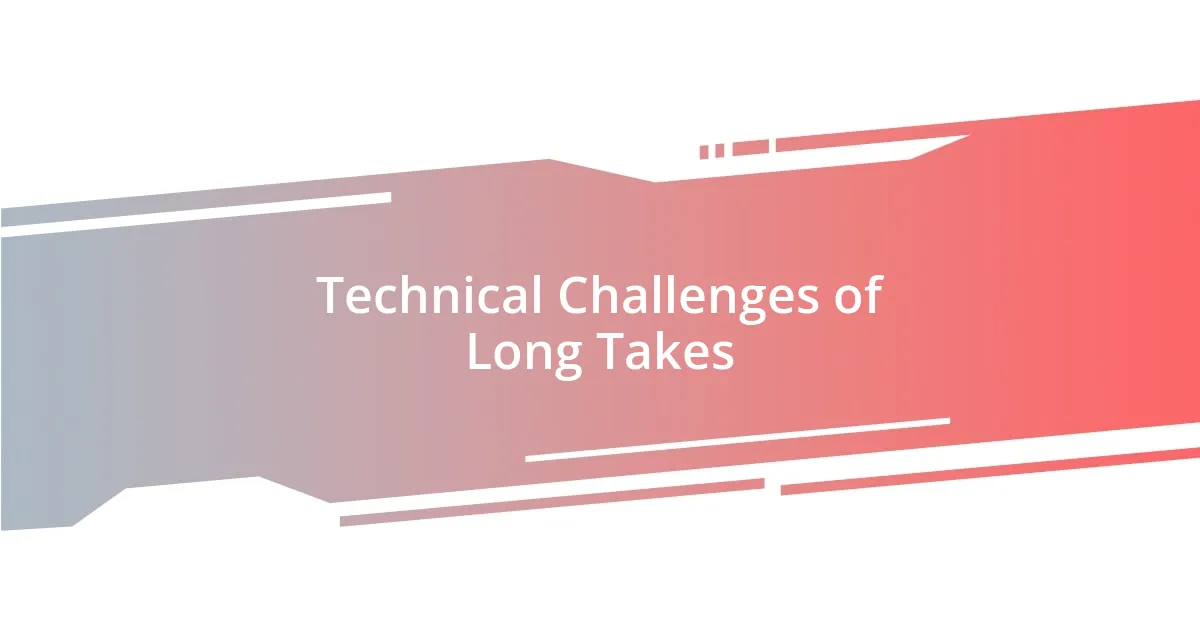
Technical Challenges of Long Takes
Long takes present unique technical challenges that can be quite daunting. One of the primary issues is the need for perfect synchronization between the actors and the camera crew. During a project I worked on, I remember the adrenaline rush of coordinating a long take that involved multiple elements: the lighting had to be just right, and each actor’s timing was crucial. If just one element fell out of sync, we would have to start over, which creates a lot of pressure on everyone involved.
Another challenge is managing the equipment effectively. Unlike scenes with quick cuts where repositioning can happen seamlessly, long takes require incredibly mobile setups. I recall a pivotal scene where we had to incorporate a steadicam operator who navigated through tight spaces without interrupting the flow of the shot. This experience taught me just how essential it is to balance technical capability with artistic vision, as even the best-timed shot can fall flat if the technical side isn’t perfectly executed.
Consistency in performance is also vital, not just in terms of dialogue, but in emotional delivery. There was a moment in one long take where an actor had to convey a wave of emotion, and believe me, the pressure was immense. Maintaining that emotional investment throughout an uninterrupted shot is no small feat. It demands both the actor’s focus and deep trust between the director and the cast. This experience significantly shaped my appreciation for the artistry behind long takes.
| Technical Challenge | Description |
|---|---|
| Synchronization | Actors and camera crew must work in perfect harmony to maintain the flow of the shot. |
| Equipment Management | Requires effective handling of equipment to ensure minimal disruption in a continuous take. |
| Consistency in Performance | Actors need to maintain emotional depth and timing without breaks. |
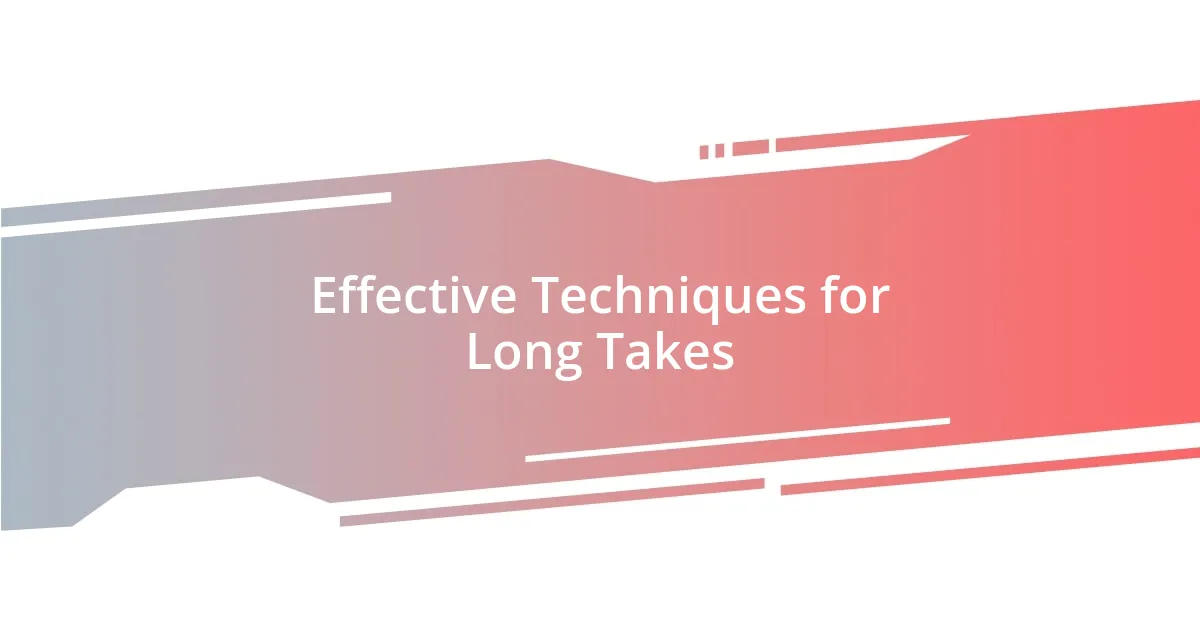
Effective Techniques for Long Takes
To effectively execute long takes, I’ve found that meticulous planning is crucial. In one memorable shoot, I observed how storyboarding each detail ahead of time made a tangible difference in the process. It’s like mapping out a treasure hunt; every turn counts, and knowing each character’s movements and emotional beats ensures that the scene flows seamlessly, almost like a delicate dance between the actors and the camera.
Another technique I’ve come to appreciate is the use of rehearsal. The more rehearsals I was a part of, the more the actors settled into their roles, which fundamentally changed how the scene felt. I recall a particular rehearsal where we spotted an opportunity for an unscripted moment that enriched the storyline. It taught me that sometimes, the unexpected can turn a well-planned take into something extraordinary while also providing a refreshing sense of spontaneity that long takes thrive on.
Finally, lighting plays a pivotal role in maintaining the integrity of a long take. I remember being on set where the lighting had to be adjusted dynamically to adapt to the actor’s movements — each flicker and fade had to feel organic. It made me realize how every element in the frame must work harmoniously, creating an environment that is not just visually appealing but also enhances the storytelling. Isn’t it fascinating how something as simple as light can transform a moment and amplify the emotional weight of a scene?
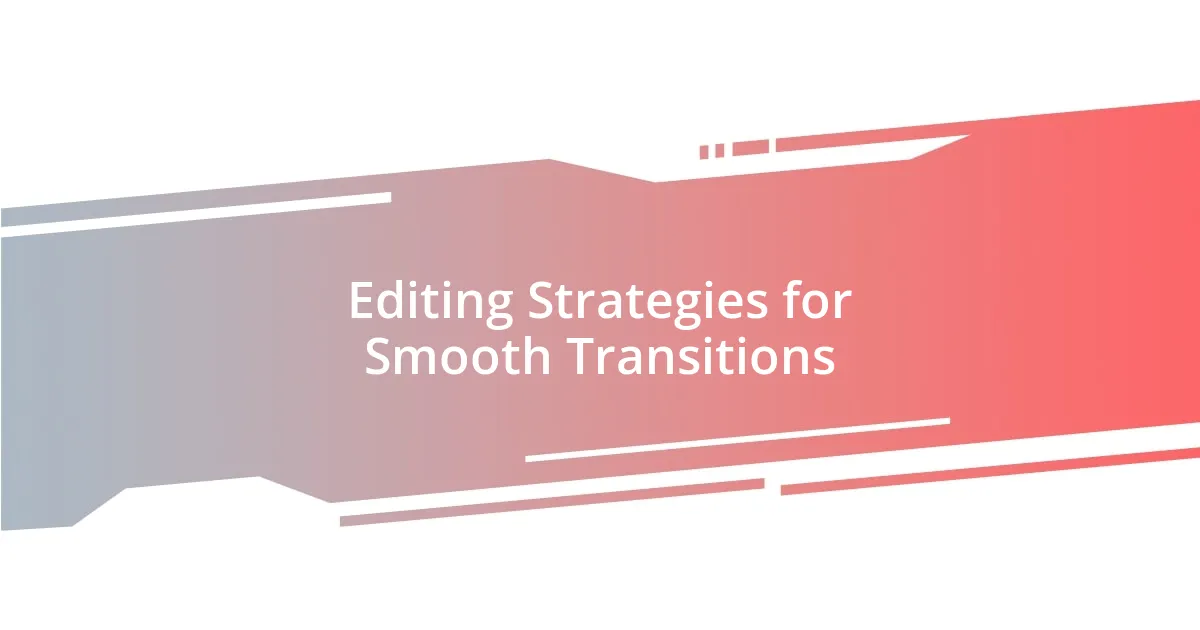
Editing Strategies for Smooth Transitions
When it comes to editing for smooth transitions within long takes, I always emphasize the importance of rhythm. There’s a natural flow that unfolds during an uninterrupted shot, and the editor’s role is to maintain that cadence. I remember sifting through hours of footage after a particularly engaging take where the tension was palpable; ensuring that each cut blends seamlessly into the next became an exhilarating puzzle. Have you ever tried to piece together a music track, adjusting the tempo until it feels just right? That’s the kind of instinct you develop when editing long takes.
One strategy that works wonders is utilizing sound bridges. In one project, I discovered how a lingering sound from one scene could gently lead into the next, almost whispering the audience into the new moment. It’s like a warm handoff between scenes. The trick lies in selecting sounds that resonate emotionally with the transitions — it feels intentional and keeps the viewer invested. Isn’t it amazing how sound can do so much heavy lifting?
Lastly, I’ve learned that color grading can significantly enhance the fluidity of transitions. I recall a shoot where the color palette played into the emotional arc of the story. By subtly adjusting the hues between scenes during editing, we created an undercurrent that kept viewers engaged. It was a realization that the visual tone could echo the emotional journey, ultimately making the long take feel cohesive. It truly reinforced how every detail matters in storytelling. Wouldn’t you agree that even the slightest change in color can evoke powerful feelings?
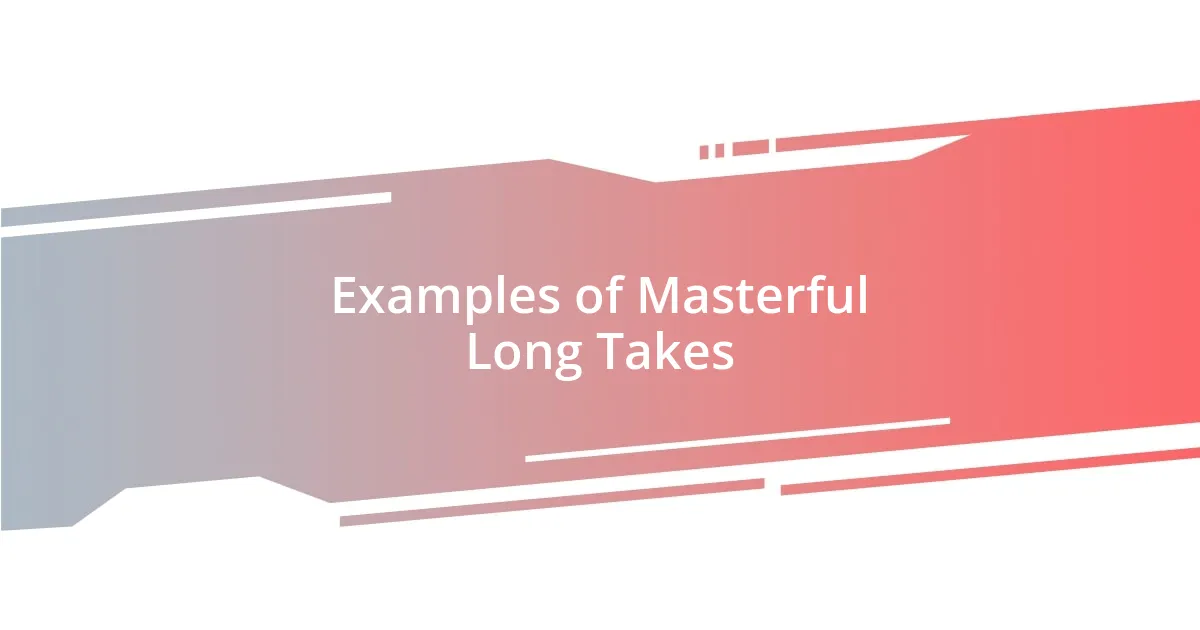
Examples of Masterful Long Takes
One of the most striking examples of a masterful long take that comes to mind is from Alfonso Cuarón’s “Children of Men.” I vividly remember watching the scene where Clive Owen’s character navigates through a war-torn city, and the camera follows him meticulously for just over six minutes. It felt as if I was right there with him, experiencing the chaos firsthand. That relentless tension captivated me, making the viewer feel every ounce of fear and urgency; it’s a brilliant reminder of how effectively a continuous shot can immerse the audience in the story.
Another unforgettable instance is the opening sequence of “Birdman,” directed by Alejandro González Iñárritu. I found myself completely absorbed as the camera weaves through the theater, capturing actors rehearsing and interacting effortlessly. It’s almost like attending a live performance where each moment flows naturally into the next. The seamless transitions drew me further into the main character’s neurotic world, highlighting his struggles and insecurities in real time. Have you ever felt that kind of intimacy with a character? It’s a testament to how long takes can enhance emotional depth and connection.
Lastly, I can’t overlook the iconic “House of Cards” hallway scene, where Frank Underwood walks confidently through the White House. The way the camera follows him, as he maintains his composure amid the bustling activity around him, struck a chord with me. It was a brilliant combination of mise-en-scène and performance that reflected political maneuvering in a single shot. This made me ponder how much a well-executed long take can communicate about a character’s psyche without uttering a single word. Isn’t it amazing that something so simple as movement can convey such rich storytelling?
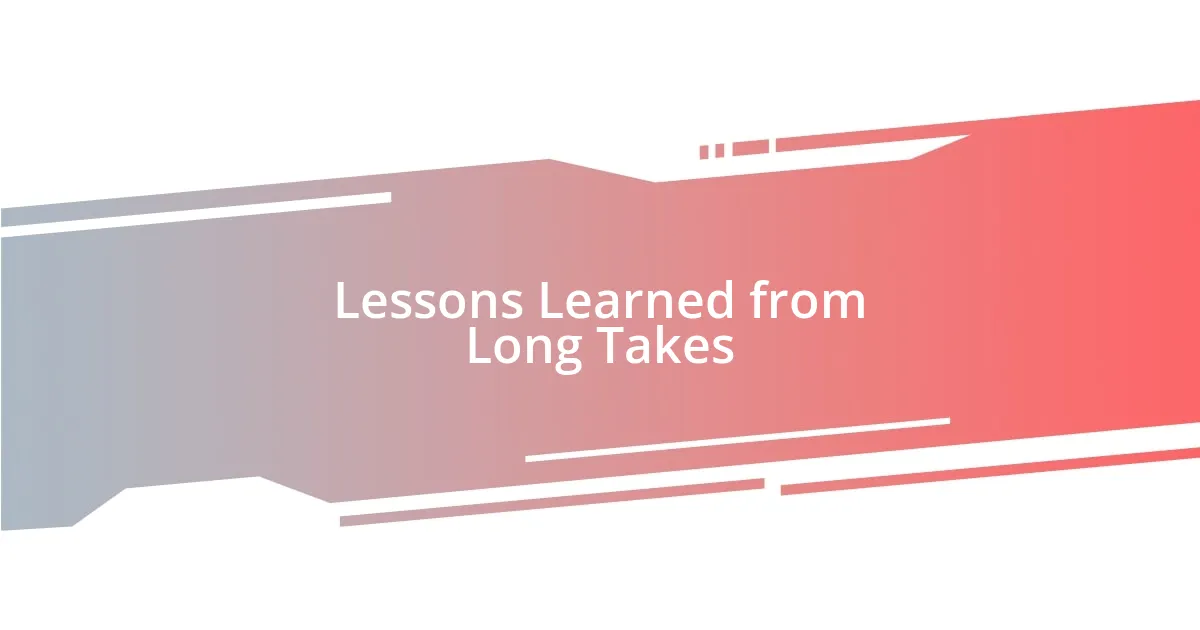
Lessons Learned from Long Takes
When I first delved into the art of long takes, I quickly learned about the power of patience. In one of my early projects, I found myself holding my breath during a take that lasted nearly seven minutes. The challenge was to not let frustration overshadow the moment, but rather to fully absorb the emotions unfolding before me. This experience taught me that sometimes, the best scenes bloom slowly, giving the audience space to engage with the story on a deeper level. Have you ever felt that sense of anticipation build up in a long take?
I also discovered that blocking is crucial in long takes. I remember working on a short film where the actors had to navigate a crowded street scene. The choreography required extensive rehearsals to ensure that they moved fluidly within the frame. This taught me how vital it is for every actor to know their marks and motivations. When each element comes together, the impact is captivating. Don’t you think it’s fascinating how coordinated movements can create visual poetry?
Another lesson I picked up was the importance of emotional stakes. During a captivating sequence I filmed, the character wrestled with a life-changing decision, and the lengthy shot allowed viewers to feel every moment of hesitation and resolve. It was a poignant reminder that when a scene breathes, it invites the audience to experience their own emotional journey alongside the characters. I often reflect on how long takes can offer a unique intimacy that swift cuts simply cannot match. Have you had a moment where time seemed to stand still in a film, drawing you even closer to the narrative?
